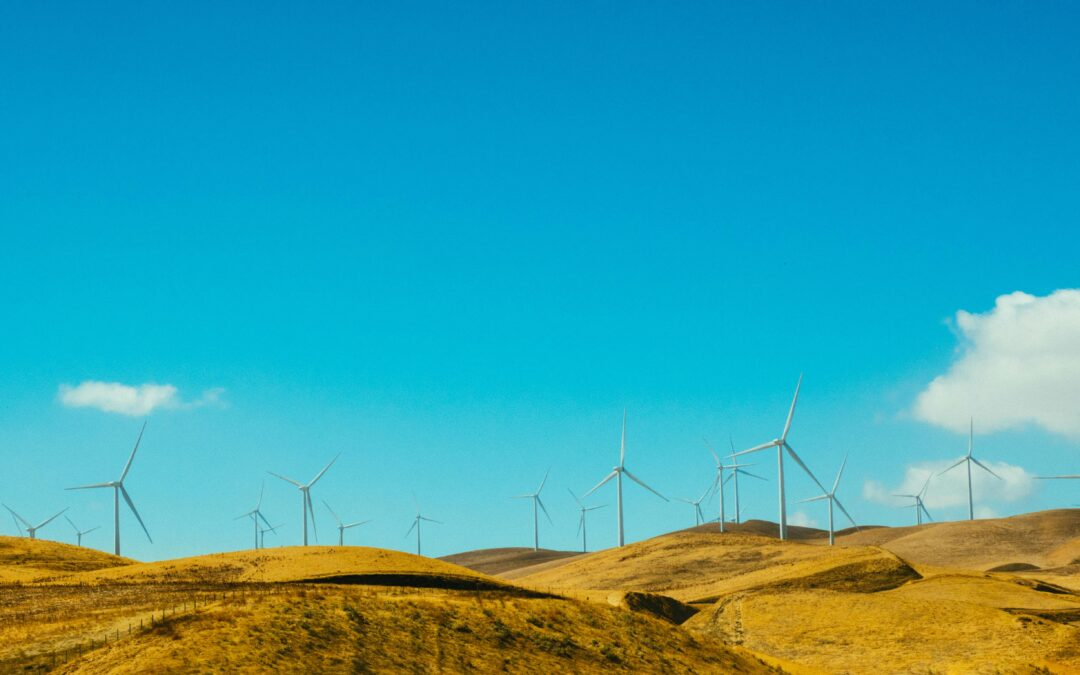With deadlines for net zero targets growing nearer, there is a pressing global need to move towards renewable energy sources. Despite the MENA region’s vast reserves of fossil fuel resources, many Middle Eastern nations have already made major progress towards developing renewable energy technologies and diversifying their energy mix. Here’s what you need to know about the region’s transition:
Solar Power
The UAE is a key player in MENA’s sustainable energy transition, having set ambitious goals to greatly increase the share of green energy it uses. The UAE Energy Strategy outlines ambitious and far-reaching plans, including generating 44 percent of the country’s electricity from renewable sources by 2050. To achieve this, the UAE has invested heavily in solar energy. Today, it is home to the Mohammed bin Rashid Al Maktoum Solar Park, the biggest single-site solar energy park on Earth. This enormous facility is predicted to reduce the country’s carbon footprint by around 6.5 million tons each year, thanks to its 5,000-megawatt capacity.
Across the Middle East, progressive governments are accelerating their investments in renewable energy technologies like waste-to-energy and solar. These are also appealing focus areas for institutional investors. Meanwhile, sustainability initiatives with missions to reverse the consequences of climate change are intensifying their calls on government institutions to step up and advance the cause. Adopted by over 100 multinational financial institutions, the Equator Principles require members to meet a broad range of social and environmental criteria.
Although the economies of many countries in the MENA region rely on fossil fuels, progressive governments like the Gulf Cooperation Council have expedited investment in renewable energy. In a region with low financing costs and 365 days of sunshine, renewable energy tariffs have now reached parity with fossil-fuel based power sources. Solar is being called “the new oil” in many MENA countries.
Hydrogen-based Energy
In the global shift to sustainable energy sources, scaling renewables is a critical imperative. This expansion is integral to reducing dependence on fossil fuels, mitigating climate change, and ensuring a resilient and sustainable future. Kivanc Karayol is the Volvo Group’s Head of Electromobility and Sustainable Growth. He suggests that rather than scaling, the challenge is actually efficiency. He points out that the UAE quickly reached 25 to 26 percent efficiency when it initiated its renewable energy journey in 2011. Karayol also highlighted the remarkable potential of solar energy, emphasizing the vast untapped potential of renewable energy resources.
Meanwhile, Saudi Arabia is also playing a prominent role in the MENA’s transition to renewable energy. It has a pipeline of sustainable energy projects valued at $18 billion, and around $13 billion of those are close to or at tendering stage. In Neom, Saudi Arabia’s supersized smart city, a green hydrogen plant is scheduled to be operational by 2026. Many people regard hydrogen as the fuel of the future, with the potential to power transportation and manufacturing, spur economic growth, and slash emissions.
Developing clean hydrogen products for export lie at the heart of the Gulf Cooperation Council’s energy plans. Hydrogen does not produce greenhouse gas emissions when burned. As a result, it has emerged as a potential pathway for industrial decarbonization, facilitating climate change mitigation and energy security.
Low-Carbon Blue Hydrogen
In addition to hydrogen created through the electrolysis of water, there is also significant scope to produce low-carbon blue hydrogen using natural gas. The MENA region is well placed for generating blue hydrogen thanks to its low-cost natural gas resources. Its depleted oil wells offer ample carbon storage capacity. In addition, blue and green hydrogen output can be converted to ammonia. The resulting product can then be stored and shipped to markets in the US, Europe, and Asia.
The clean green and blue hydrogen markets present potentially vast economic diversification and export opportunities for Arab states. Gulf states also have a significant competitive advantage in the blue hydrogen market, thanks to their well-established trade routes and markets and expertise in the hydrocarbon sector.
Waste-to-energy projects are being implemented by Gulf states, where rapidly growing, increasingly affluent populations generate high per capita levels of waste. In Dubai, the world’s largest waste-to-energy plant is on course to deliver electricity for more than 120,000 households.
Conclusion
Oil exports are likely to account for a significant proportion of the GDP of MENA nations at least for the foreseeable future. However, with the Gulf predicted to be disproportionately affected by the impacts of climate change, continued use of fossil fuels could jeopardize the region’s continued existence. With these challenges come opportunities for forward-looking businesses and countries. They are paving the way for the gradual phasing out of the fossil fuel industry and a transition to clean and sustainable energy.

